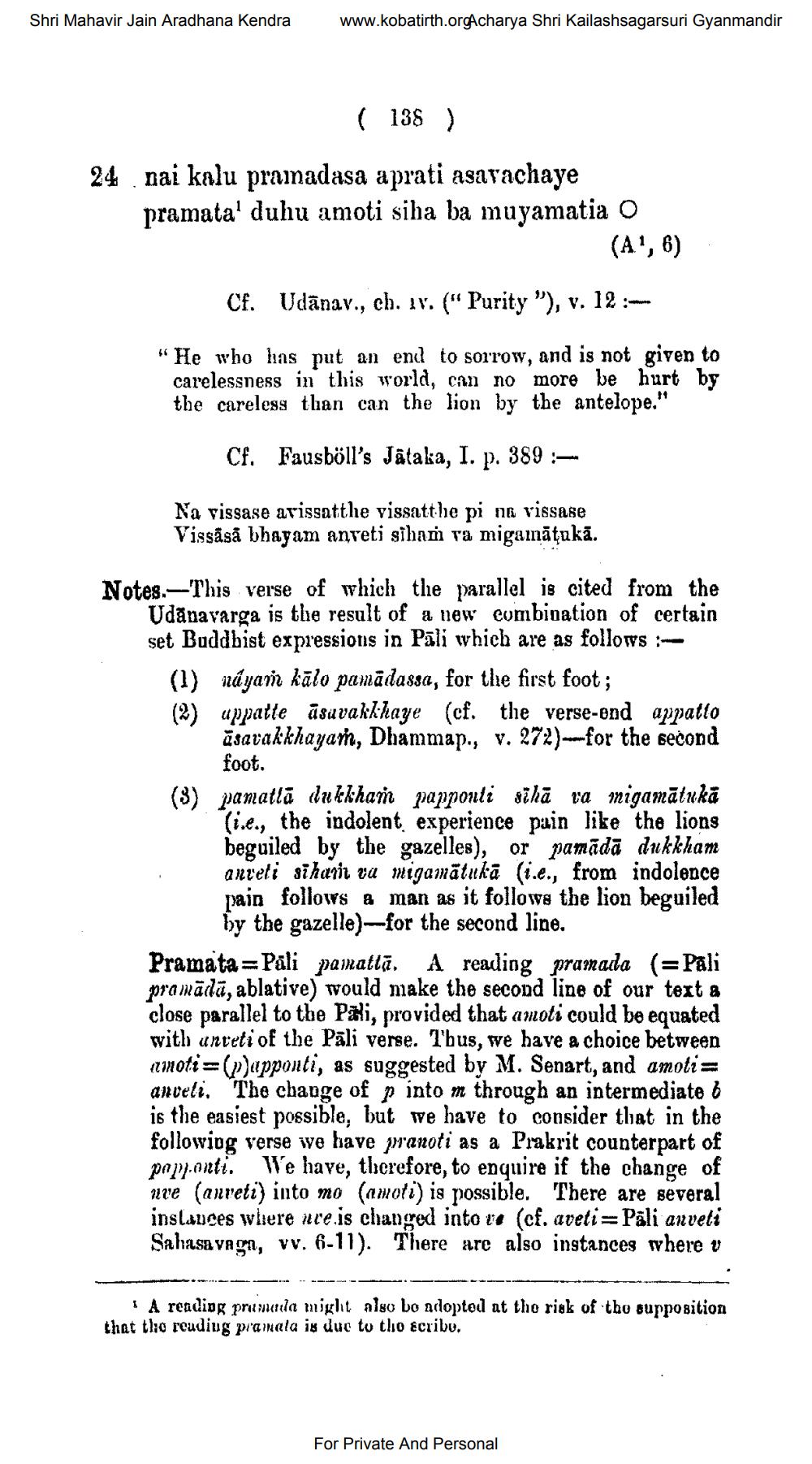________________
Shri Mahavir Jain Aradhana Kendra www.kobatirth.orgAcharya Shri Kailashsagarsuri Gyanmandir
( 138 )
24 nai kalu pramadasa aprati asavachaye pramata' duhu amoti siha ba muyamatia O
(A1, 6)
Cf. Udanav., ch. 1v. (" Purity "), v. 12 :—
"He who has put an end to sorrow, and is not given to carelessness in this world, can no more be hurt by the careless than can the lion by the antelope."
Cf. Fausböll's Jataka, I. p. 389 :
Na vissase avissatthe vissatthe pi na vissase Vissäsa bhayam anveti siham va migamāṭukā.
Notes. This verse of which the parallel is cited from the Udanavarga is the result of a new combination of certain set Buddhist expressions in Pali which are as follows :
(1) náyaṁ kālo pamādassa, for the first foot;
(2) appatte asuvakkhaye (cf. the verse-end appatto asavakkhayam, Dhammap., v. 272)-for the second foot.
(3) pamatta dukkham papponti sihā va migamātukā (ie., the indolent experience pain like the lions beguiled by the gazelles), or pamādā dukkham anveti siham va migamātukā (i.e., from indolence pain follows a man as it follows the lion beguiled by the gazelle)-for the second line.
Pramata Pali pamatta. A reading pramada (= Pali pramada, ablative) would make the second line of our text a close parallel to the Pali, provided that amoti could be equated with anreti of the Pali verse. Thus, we have a choice between amoti=(p)apponti, as suggested by M. Senart, and amoti = anveli. The change of p into m through an intermediate is the easiest possible, but we have to consider that in the following verse we have pranoti as a Prakrit counterpart of papponti. We have, therefore, to enquire if the change of uve (anveti) into mo (amoti) is possible. There are several instances where are is changed into ve (cf. aveti=Pāli anveti Sahasavaga, vv. 6-11). There are also instances where v
A reading pramada might also be adopted at the risk of the supposition that the reading pramata is due to the scribo.
For Private And Personal




